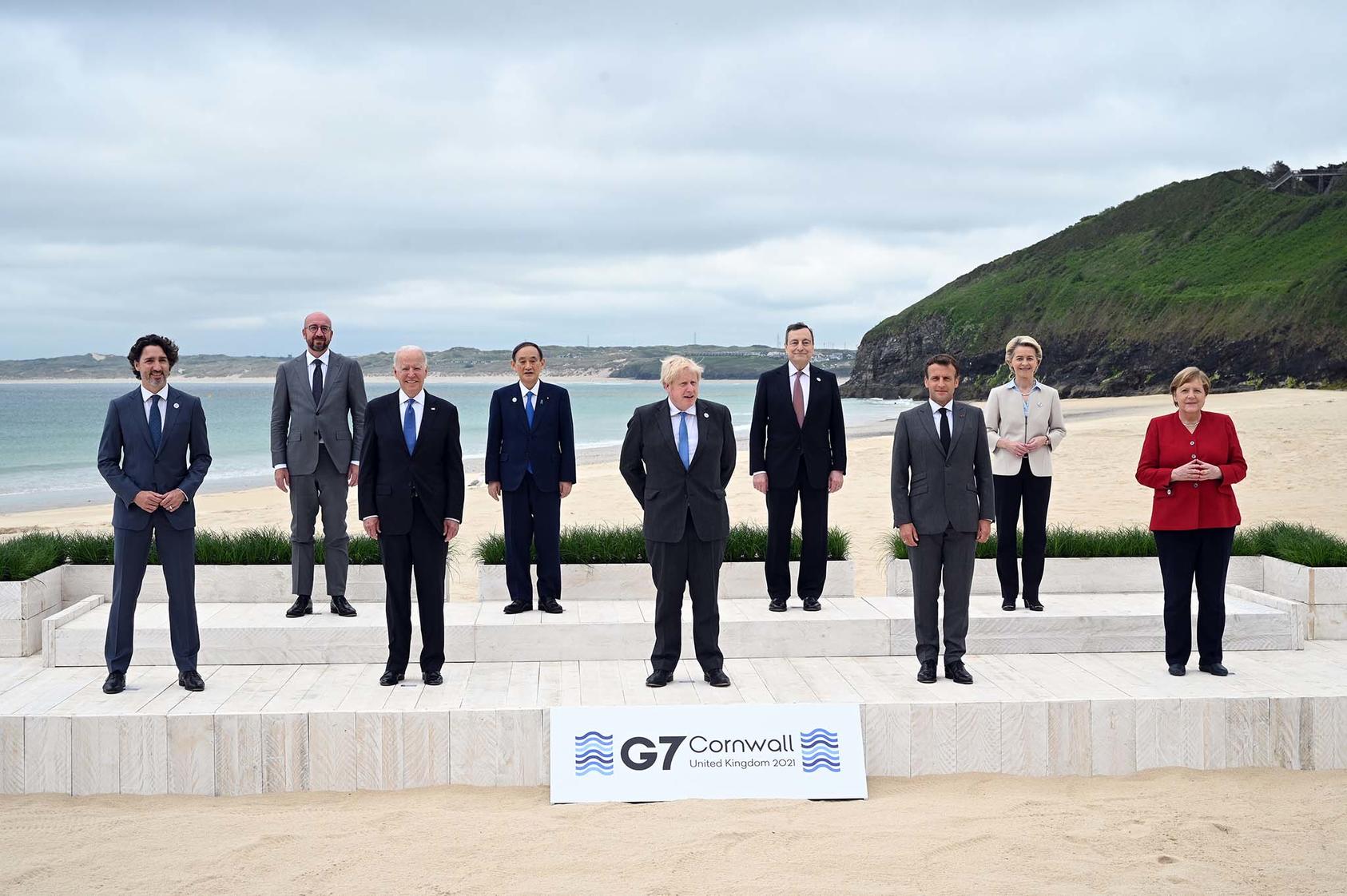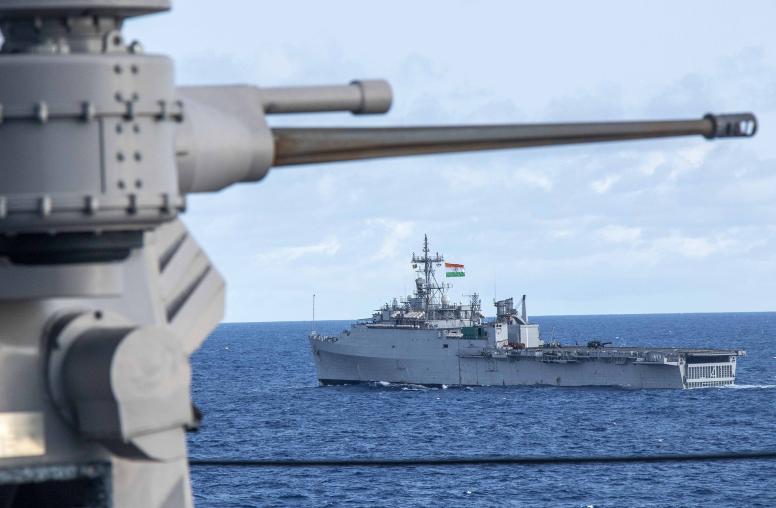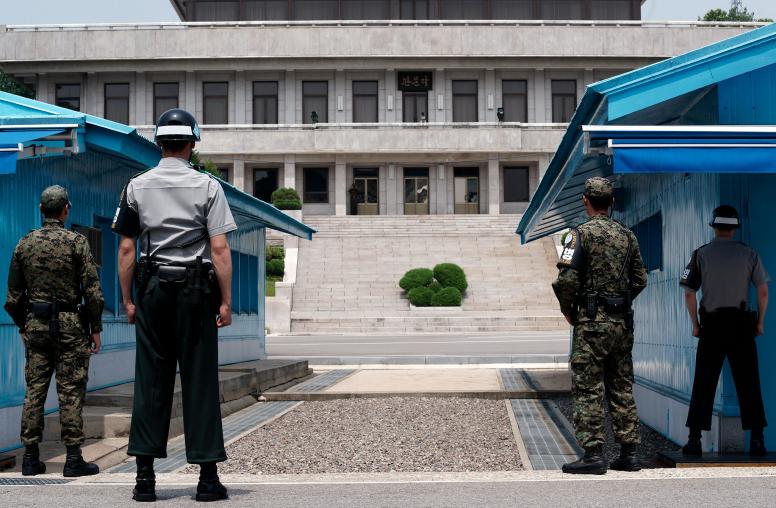Practicing Peace and Conflict Diplomacy in a Complex World
What role can diplomacy play amid renewed great power competition and a weakening liberal international order?
A combination of a weakening liberal international order, sharpening U.S.-China rivalry, growing transnational threats, shrinking space for civil society and rising nationalism and populism has complicated the practice of peace and conflict diplomacy. A new volume of essays examines approaches to such diplomacy in this complex environment.

“Diplomacy and the Future of World Order” explores the future of peace and conflict diplomacy in three arenas: managing great power competition and potential confrontation, managing others’ conflicts and managing threats to the international system, as is currently being posed by the COVID-19 pandemic, said Chester Crocker, James R. Schlesinger professor of strategic studies at Georgetown University and an editor of the book.
The book’s contributors — 20 experts from around the world — offer three broad scenarios for the future: a return to a Cold War-like situation, a return to a liberal rules-based order and variable geometry or a la carte multilateralism, said Crocker. Each scenario requires a different kind of diplomacy.
The first scenario would likely require transactional diplomacy; the second values-based, governance-based diplomacy; and the third “a concert depending on the issue” at the regional or functional levels that is based on specific challenges, said Crocker.
Crocker delivered remarks at a virtual event hosted by the U.S. Institute of Peace on June 10. George Moose, vice chair of USIP’s board of directors, moderated a panel discussion that included Fen Hampson, chancellor’s professor at Carleton University; Barbara Bodine, director of the Institute for the Study of Diplomacy; Solomon Dersso, founding director of Amani Africa and chairperson of the African Commission on Human and Peoples’ Rights; Jean-Marie Guéhenno, a distinguished fellow in the Foreign Policy program at the Brookings Institution; and See Seng Tan, a professor of international relations at S. Rajaratnam School of International Studies in Singapore. Dersso, Guéhenno and Tan contributed chapters to “Diplomacy and the Future of World Order.” Hampson and Pamela Aall, a senior adviser on conflict prevention and management at USIP, are the two other editors of the book.
A Changed and Complex Environment
International relations are no longer primarily about “managing threats to a well-understood balance of power,” said Lise Grande, USIP’s president and CEO. It is now also about “managing the realignment of power and addressing threats to the planet, ending humanitarian catastrophes including pandemics.” To meet these challenges, Grande recommended new methods of diplomatic collaboration.
Hampson described three kinds of diplomacy that characterize relations between states:
- Instrumental or competitive diplomacy: developing spheres of influence and managing alliances.
- Stabilization diplomacy: managing relations, de-escalating conflicts or preventing them from escalating.
- Governance diplomacy: developing new norms of state behavior.
The changed global environment has created obstacles to the practice of peace and conflict diplomacy. “Some would argue that we are moving into a world of much more competitive or instrumental diplomacy,” said Hampson. However, noting the enhanced risk of an escalation of great power conflict, he added: “It is fair to say that if we are going to manage great power relations, we’re going to need heavy doses of stabilization diplomacy.” This type of diplomacy includes confidence-building measures, reviving arms control and strengthening nonproliferation regimes.
On the other hand, Hampson predicted less demand for governance diplomacy — marked by democracy building and peacebuilding — which, he said, has become much harder to do because it faces a lot more pushback in the current environment. Hampson said that the book makes a strong case for concert diplomacy as the principal form of international cooperation in the third decade of the 21st century. Unlike, the 19th century version of concerts, the 21st century version will have a lot more variable geometry in terms of the participants who promote cooperative solutions to problems of global order and conflict management. They will work together in a pragmatic manner to promote new norms, rules of the road and approaches to global cooperation.
Biden’s Embrace of Diplomacy
President Joe Biden has championed the United States’ return to diplomacy and multilateralism. “Diplomacy is back at the center of our foreign policy,” he proclaimed at the State Department on February 4. Last week, the president was in the United Kingdom participating in the G-7 summit in Cornwall.
Bodine worries that many observers believe that by simply hitting the reset button the United States will return to a time when it saw itself as indispensable and irreplaceable on the world stage. Such thinking is flawed, she said.
Over the past four years, Bodine said, the world has moved on without the United States. “Our place in diplomacy and our place in multilateralism has changed,” she said.
“America is back at the table,” Biden declared at the end of the G-7 summit. But Bodine described nationalism as a major challenge, noting that many more countries are now defining their interests and deciding their tools in many cases irrespective of great powers. “We don’t get the daddy chair back,” she said.
The Case for Agile Diplomacy
Diplomacy has become far more complex. Bodine said diplomacy has become fragmented and layered, both horizontally — with more states engaged in diplomacy today — and vertically — with state as well as nonstate actors involved in diplomacy.
Bodine made the case for diplomacy that is agile, flexible and adaptive. Contending that most issues facing the world today are not amenable to military or hard power solutions, she said diplomacy is “going to have to be front and center.”
“The bottom line,” Crocker said, “diplomacy is going to be a central challenge and a central requirement for the age that we are now entering.” Like Bodine, he recommended diplomacy that is agile, networked laterally and builds consensus around issues. Such diplomacy requires working with a range of actors, both official and unofficial.
Guéhenno said the most likely of the three scenarios mentioned in the book is the third one — practical cooperation in an ad hoc manner. “It’s not going to be big powers coming together and deciding what the future of the world is going to be. … That top-down approach is gone for good,” he said. Instead, he predicted a “horizontal approach” in which actors who care about a particular issue will come together to try and address it. Such cross-cutting alliances between different types of actors will make the world resilient, he said.
Caught in the Middle
As the rivalry between the United States and China, and to some extent Russia, has escalated countries around the world have found themselves caught in the middle.
Tan said the U.S.-China rivalry is a major challenge in Southeast Asia. It has “raised the prospect of the major powers becoming spoilers rather than providers and enablers of peace and security,” he said. It has also “compressed the strategic space” available to small nations to conduct diplomacy, he added.
Tan said Biden’s assurance that the United States will take seriously its role as a global leader is welcomed in Southeast Asia. “What the Biden administration has promised the region — that it will in the midst of strategic rivalry with China, nonetheless, seek ways to cooperate with China — is a message that the Asian region welcomes very, very strongly,” said Tan, adding that this approach creates an opportunity for regional actors to “nurture great power relations in ways that would move the region toward much more positive peaceful ends.”
Dersso said Africa, too, doesn’t want to be forced into choosing sides in a great power competition. Describing the interrelationship between regional and international architectures for peace and security, Dersso said that when great power competition paralyzes the United Nations Security Council on handling African issues, it also affects how these issues are handled in the African Union (AU), which relies on collaboration, coordination and support from the international system. Such a situation “can affect the effectiveness of an already struggling peace and security architecture that is trying to stand on its feet,” he added.
Moose suggested that peacekeeping is one area where the United States and China have a shared understanding. China also has major investments in Africa which it wants to protect and so there will be political support for some “transformed peacekeeping,” Guéhenno, a former UN under-secretary general for peacekeeping, said.
Ineffective Regional Organizations
Around the world, regional organizations are struggling with peace and conflict management. In Southeast Asia, Tan said, the impact of the U.S.-China rivalry is evident on the Association of Southeast Asian Nations (ASEAN), which has been hamstrung by its members’ national interests.
In Africa, Dersso said, the AU may find itself paralyzed because of a lack of consensus among its member states.
In the Middle East, there is the Arab League, which Bodine, a former U.S. ambassador to Yemen, said is a “hollow organization.” She also noted that the Gulf Cooperation Council, which for a while served as a “default Arab League,” had until recently been riven by infighting. Describing the regional actors as the major source of conflict in the Middle East, Bodine said: “Looking to regional actors to help with conflict management — you’re asking the arsonist to come and put out the fire.”
Transnational criminal actors, including cyber criminals, have further complicated peacemaking around the world. The fundamental challenge posed by these actors is that they have no real interest in “full peace” or “full war” as both those situations hurt their business, said Guéhenno.
Unlike during the Cold War, when there was a “defining issue” and a “defining power,” now there is neither, said Guéhenno. “No power or group of powers has enough influence to really shape the world. And that really raises the question whether there can be any kind of international order without the existence of such a power. It is a question that really challenges the United Nations every day,” he added, describing this as a “sense of loss of control.”
Diplomacy as an Orchestra
In closing remarks, Aall emphasized the changing nature of diplomacy and the much more complex playing field. She said it is all the more important to create room for other actors, including NGOs, local civil society, business and others to have a voice in diplomacy.
Returning to the idea of concert diplomacy, Aall said making space for new actors will mean some chairs in the orchestra will need to move over and everyone will have to learn new pieces. Predicting that diplomacy is only going to get more complicated, Aall said: “But with good orchestration and perhaps co-conducting of several conductors, we may get to a point where peace and conflict diplomacy, which includes all these different actors, is in fact more effective than it has been in the past.”



